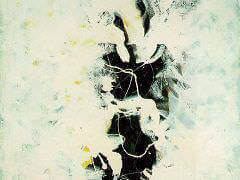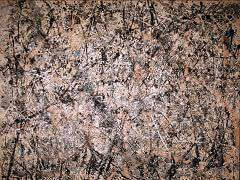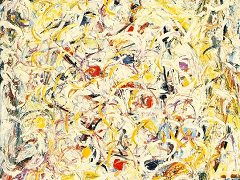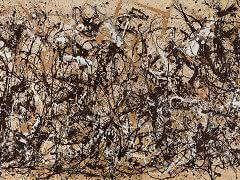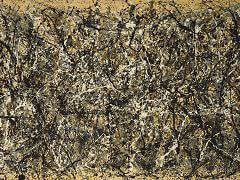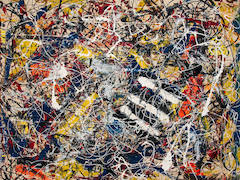Ocean Greyness, 1953 by Jackson Pollock

The critical debate that surrounded Abstract Expressionism during the late 1940s was embodied in the work of Jackson Pollock. Clement Greenberg, a leading critic and Pollock's champion, professed that each discrete art form should, above all else, aspire to a demonstration of its own intrinsic properties and not encroach on the domains of other art forms. A successful painting, he believed, affirmed its inherent two-dimensionality and aimed toward complete abstraction. At the same time, however, the critic Harold Rosenberg was extolling the subjective quality of art; fervent brushstrokes were construed as expressions of an artist's inner self, and the abstract canvas became a gestural theater of private passions. Pollock's ary from the early, Surrealist-inspired figurative canvases and those invoking primitive archetypes to the later labyrinthine webs of poured paint elicited both readings. Pollock's reluctance to discuss his subject matter and his emphasis on the immediacy of the visual image contributed to shifting and, ultimately, dialectic views of his work.
In 1951, at the height of the artist's career, Vogue magazine published fashion photographs by Cecil Beaton of models posing in front of Pollock's drip paintings. Although this commercial recognition signaled public acceptance and was symptomatic of mass culture's inevitable expropriation of the avant-garde Pollock continuously questioned the direction and reception of his art. His ambivalence about abstract painting, marked by a fear of being considered merely a decorative artist, was exacerbated, and it was around this time that he reintroduced to his paintings the quasi-figurative elements that he had abandoned when concentrating on the poured canvases. Ocean Greyness, one of Pollock's last great works, depicts several disembodied eyes hidden within the swirling colored fragments that materialize from the dense, scumbled gray ground. "When you are painting out of your unconscious", he claimed, "figures are bound to emerge". Manifest in this painting is a dynamic tension between representation and abstraction that, finally, constitutes the core of Pollock's multileveled oeuvre.



